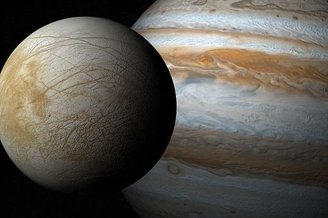The search for extraterrestrial life forms has never been this detailed. Scientists increasingly have a repository of data that can be cross-referenced and analyzed Searching for evidence of extraterrestrial life elsewhere in the universe.
On Enceladus, one of Saturn’s 145 moons, huge geysers spew material from the moon’s bowels. A recent study shows that beneath a giant frozen surface lies a huge liquid ocean containing the elements necessary for life. The big question remains: Did these elements come together to form amino acids, known as the building blocks of life?
Future expeditions may be successful in collecting more evidence. Geysers expel ocean materials to significant heights, allowing missions to collect these components without needing to land on Enceladus. Moreover, the explosion of the materials is gentle enough not to damage the structures scientists are looking for: amino acids.
similar situation Seems to be happening in Europe, on Jupiter. However, this situation can be better analyzed through the Europa Clipper space mission, which is planned to be launched in October 2024 and reach the satellite in 2030, where it will orbit 50 times.
old fear
It is extremely important that the components are resistant to water heater explosions. In the past, it was believed that even if this were to happen, we could lose everything if we did not have the right planes or collectors to keep the structures of the molecules intact.
This theory is already well known: some astrobiologists They thought there was life on Mars but they thought we killed it. So we must develop new equipment without knowing exactly which model will be best, such as the robot proposed to hunt for materials in Enceladus’ submerged ocean.
Fortunately, new studies show that amino acids essential for life can survive geyser eruptions. In fact, they can withstand 10 times more pressure than current explosions on Saturn’s moon.. Thus, it is now possible to develop the necessary technologies for the correct collection of components.
favorable luck
Professor Robert Continetti’s team from the University of California, San Francisco, created an aerosol impact spectrometer that analyzes when these microparticles collide. “This device is the only one of its kind in the world that can select individual particles and accelerate or slow them down to selected terminal velocities,” he explained.

However, the device Cotinetti developed was not designed to analyze the geysers of Enceladus, but it served this purpose perfectly. The spectrometer is perfect for throwing ice grains. Materials that can carry exact amino acids and even intact DNA fragments above the satellite surface.
The workings of geysers on the Moon Europa are even more obscure; They come and go to give you an idea. Thus, the Europa Clipper mission could provide more clarity about “neighboring” Enceladus, as well as clear up many doubts about its atmosphere.
Did you like the content? Stay up to date with more astronomy news like this on TecMundo and take the opportunity to learn about the proposed discovery of phosphorus on the moon Enceladus.
Source: Tec Mundo
I’m Blaine Morgan, an experienced journalist and writer with over 8 years of experience in the tech industry. My expertise lies in writing about technology news and trends, covering everything from cutting-edge gadgets to emerging software developments. I’ve written for several leading publications including Gadget Onus where I am an author.













